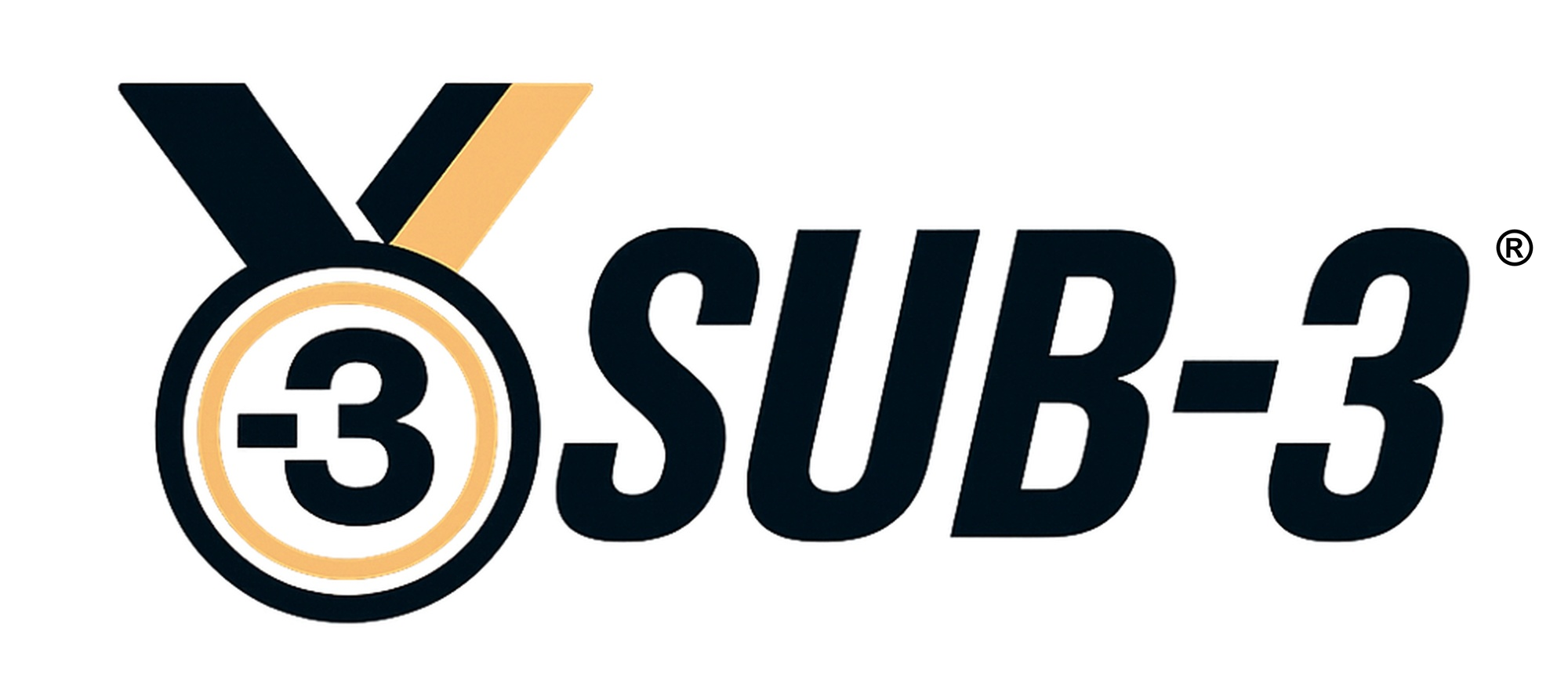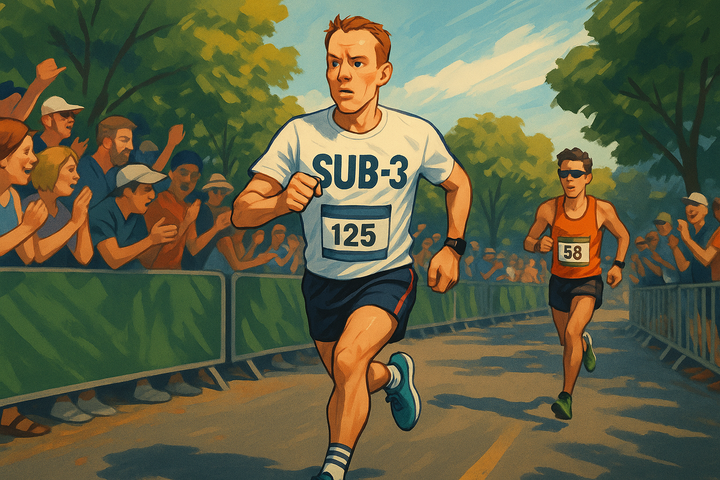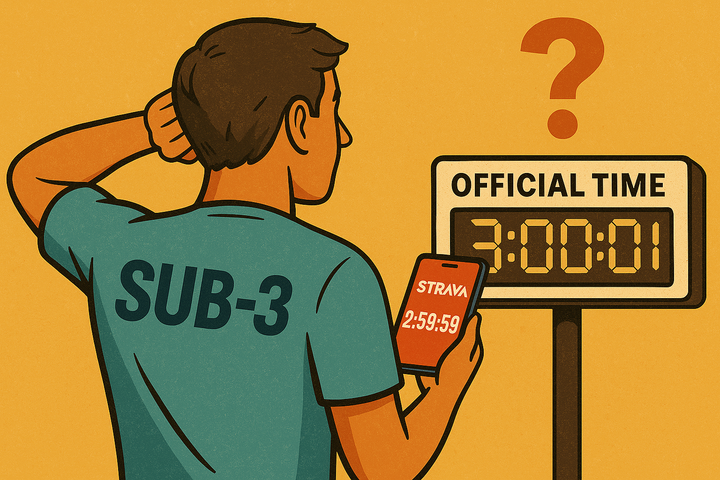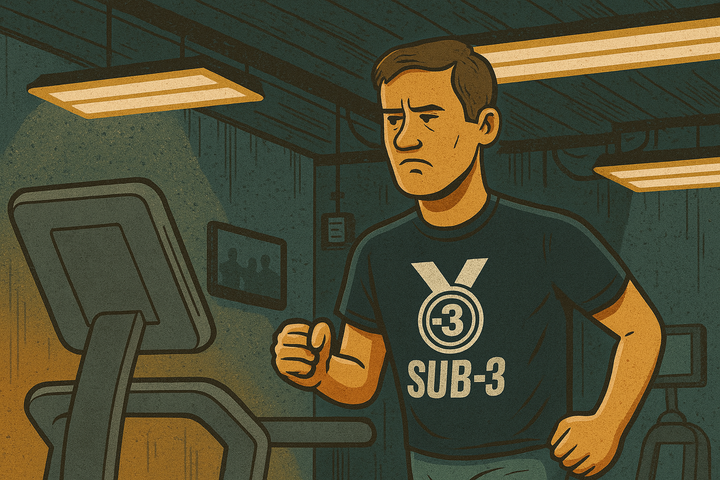Should you try for sub-3 in your first marathon?
A measured first marathon builds experience, fitness, and confidence, setting you up for long-term sub-3 success rather than risking burnout or injury.

Emil Zatopek famously won Olympic gold in the marathon at Helsinki in 1952 with a time of 2:23:03 - his first time ever racing the distance. It was one of the greatest athletic achievements of all time, rounding off his triple-gold week with an Olympic record. But, let’s be honest, you’re probably not Zatopek. You likely haven’t spent a decade grinding out miltary-level mileage, threshold intervals and elite racing across 5K and 10K.
Even if you’re a strong runner with solid times - say sub-19:30 for 5K or a 1:25 half - it still doesn’t mean you should go all-in for sub-3 straight away. Not because it’s impossible, but because a smarter first marathon - which you run, not race - sets you up for long-term success.
Here’s why you might want to hold off:
1. You don’t yet know what 42.2km feels like
No simulation truly prepares you for what happens after 30K. It’s not just a question of fitness. It’s what your legs do after three hours on the road. What your stomach can handle. What your mind does when the road still stretches on and everything hurts. Until you’ve been there, you’re guessing. If you’re going to gamble, at least understand the stakes.
2. Fuelling takes practice - and mistakes hurt
Sub-3 isn’t just about running fast - it’s about sustaining that pace while fuelling correctly. That means gels, timing, hydration and gut tolerance all need to be rehearsed. You won’t know what works until you’ve tested it on tired legs. Race day isn’t the time to wing it. One wrong move and you’re on the side of the road cramping at mile 21. The wall is real, and conquering the fear of it by successful fuelling can help you on your path to sub-3.
3. Pacing errors are brutally punished at this level
Going out a few seconds too fast per kilometre might feel fine in the first half. It might even feel smart. But sub-3 leaves no buffer. Blow up at 35K and you’ll haemorrhage minutes. Better to build experience first - run something like 3:20 at a comfortable effort, and if you feel good at 32K, press on. That teaches rhythm and judgement. Going all out and crashing teaches regret.
4. Your training base might not be ready yet
You can be fast without being strong. A 1:25 half or sub-40 10K suggests speed -but sub-3 needs more than that. You need endurance in your legs, durability across months of high mileage, and the mental grit to stick to marathon pace even when you’re tired. That kind of conditioning takes years, not months. If this is your first serious training block, you might be better served using it to learn, not to chase.
5. There’s joy in nailing your first marathon - not just surviving it
Too many people turn their first marathon into an all-or-nothing time trial. But you only get one first go at this. Wouldn’t you rather finish smiling, running strong through the final 10K, and ready to do it again? Aim for a conservative goal - say 3:20 - and see how you feel late on. If it clicks, you’ll finish fast and confident. If it doesn’t, you’ll still have a great result. But if you aim for sub-3 and it unravels, that finish line can feel like failure - even when you’ve run a time most people dream of.
6. Long-term gains beat one-time glory
Training for sub-3 isn’t a side hobby. It requires structure, consistency and sacrifice over many months. If you go all-in on your first attempt and it backfires, you risk injury, burnout or walking away from the sport. But if you play the long game - build your aerobic base, run your debut well, learn from the experience - you’ll come back stronger and faster. You’ll be the one still improving years later, while others are stuck chasing one race from the past.
I speak from experience. It took me 17 years to run my first sub-3. I ran my debut marathon back in 2005 at the (now sadly defunct) Robin Hood Marathon, and it was a 3:40. In the years that followed, I experienced every mistake you can imagine - cramps, underfuelling, hitting the wall hard, misjudging hydration. But all of it was foundational. Those early marathons were dress rehearsals that taught me the craft. They laid the groundwork for my eventual breakthrough.
You don’t need to be an overnight superstar. In fact, it’s usually more sustainable -not to mention healthier - to take the longer view. Build your base. Learn from each race. And aim for a long, strong running career—not just a single fast time.
7. It’s not a waste to run slower – it’s laying the groundwork
You’ve likely got years to chase sub-3 if you want it. Running a first marathon at a slightly more cautious pace - 3:10, 3:20, even 3:30 - doesn’t close the door. It opens it. You’ll recover faster, stay healthier, and know what you’re dealing with next time. Nothing’s lost. Everything’s gained.
Still want to go for it? Fine - but run smart
If you really must try for sub-3 in your debut, think carefully. Sub-3 is not just a fitness test - it’s an execution test. Every detail matters: pacing, fuelling, recovery, mindset. Get one of those wrong and the wheels can come off fast. Better to run a smart 3:10 in your debut than sabotage your future sub-3 chances.
Enjoyed this article? Help keep Sub-3 running — support us with a coffee.
To help fund the running of the site, Sub-3 is an Amazon Associate and earns from qualifying purchases. We only recommend gear or kit that has genuinely helped in our own running and that we believe is worth considering.



